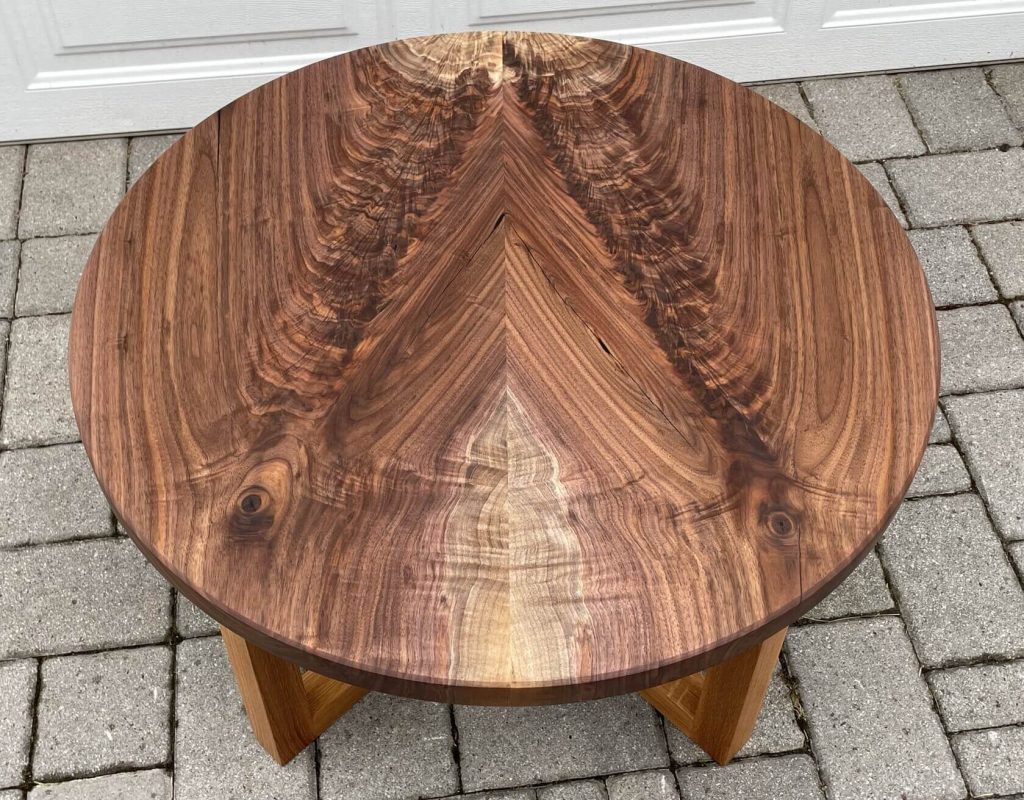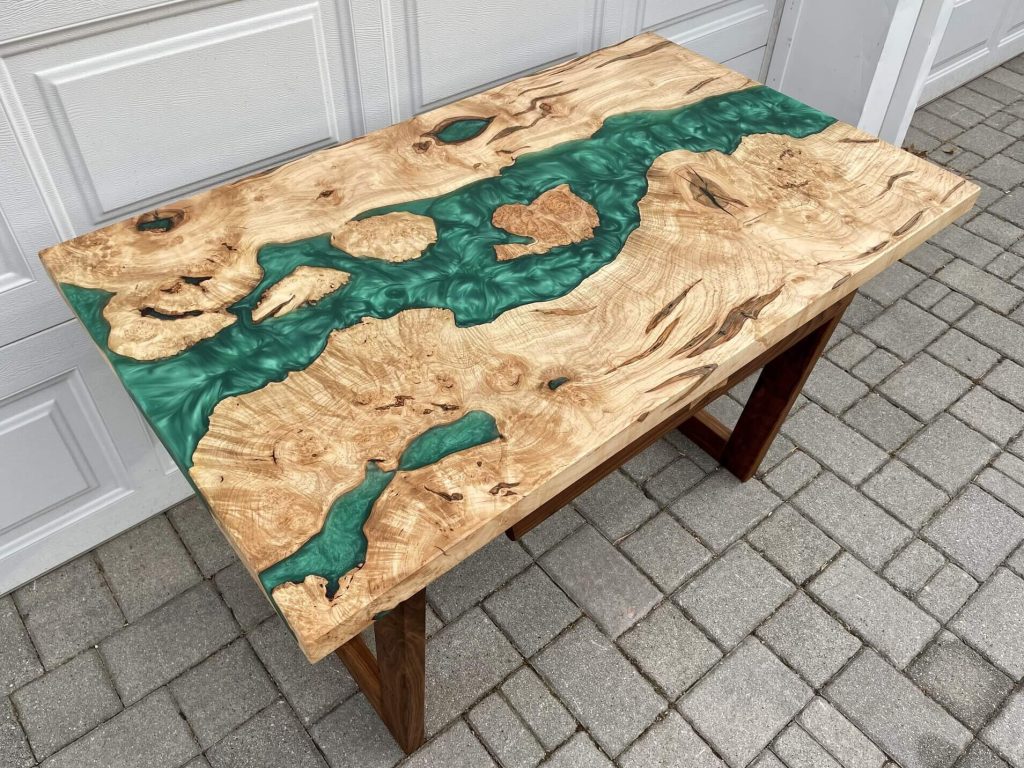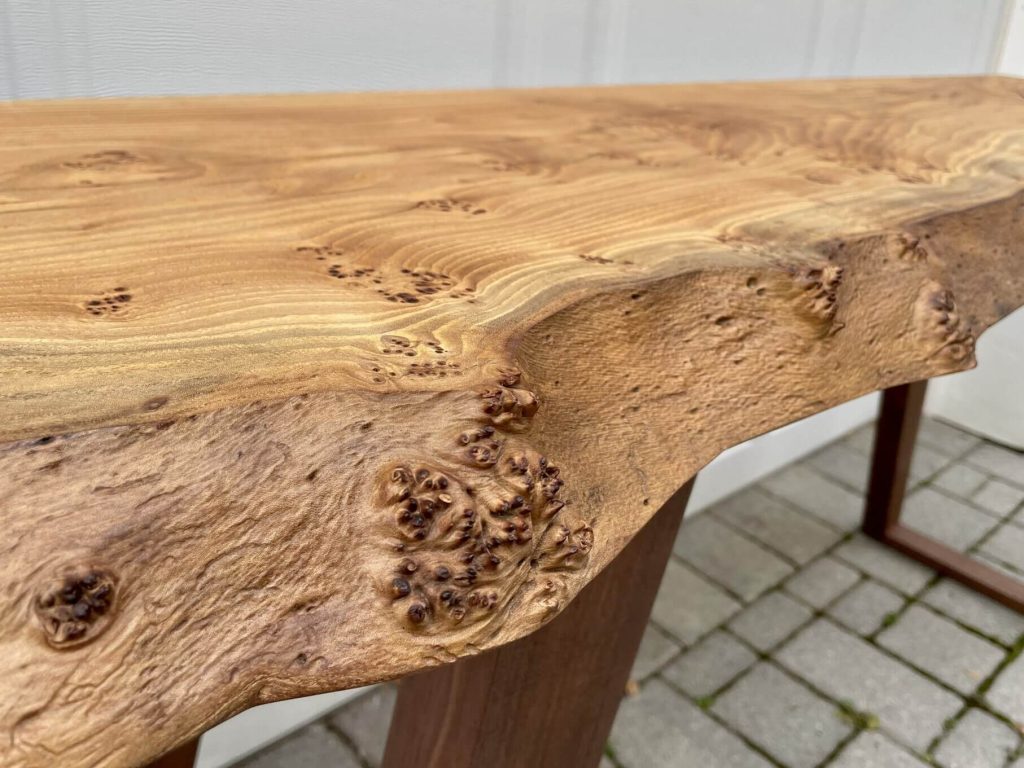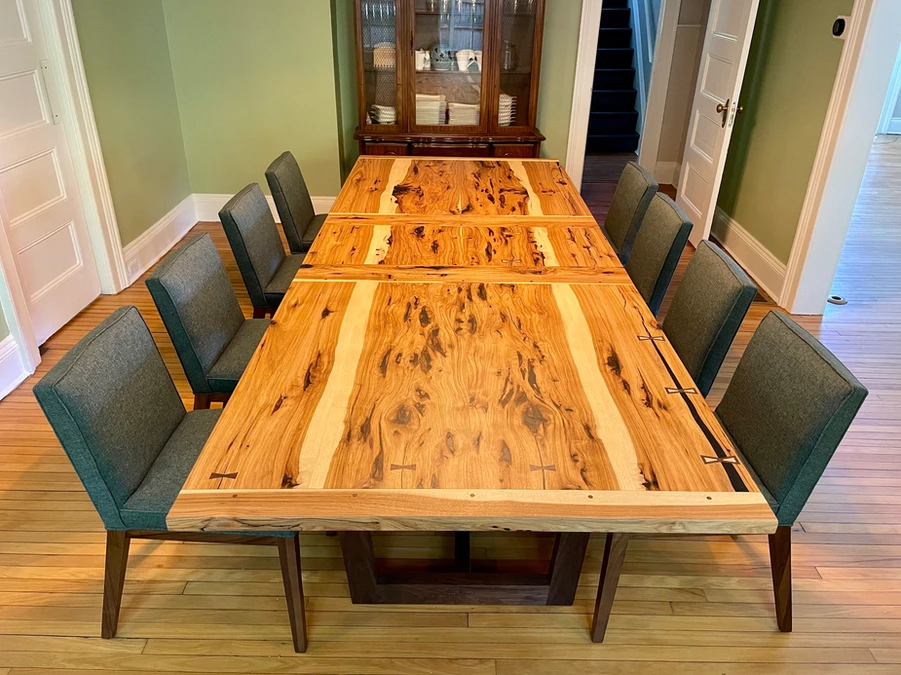My design process allows for client input at every stage of the woodworking project. I commonly work with the following wood species, but there are other options available upon request.
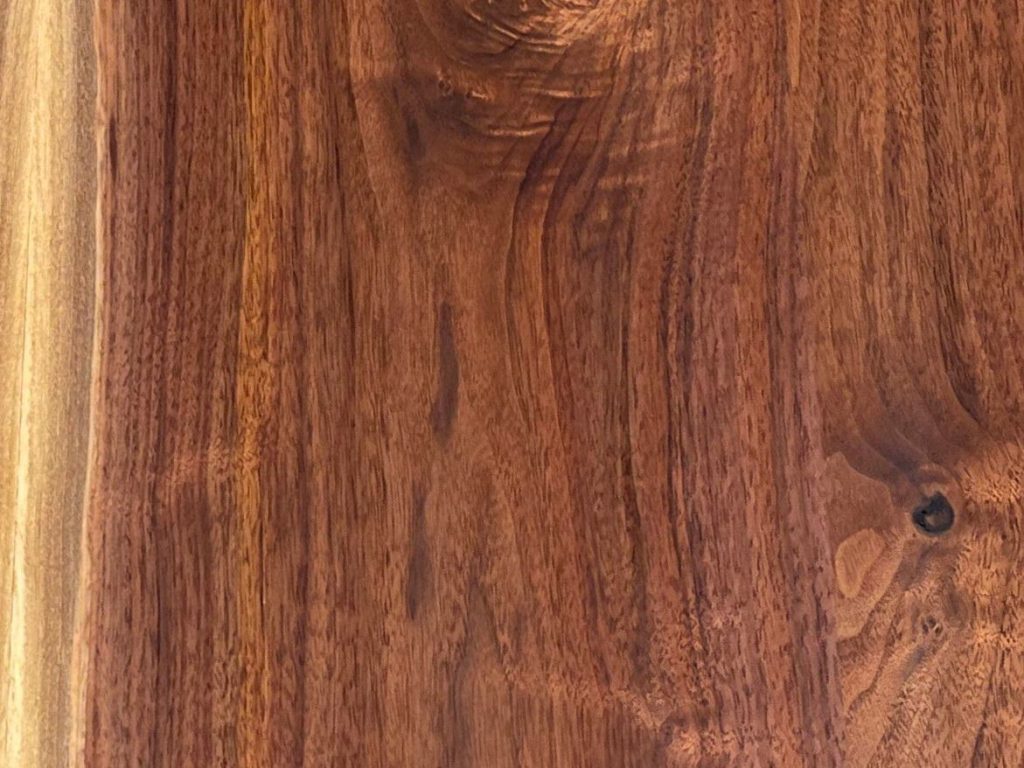
Walnut is renowned for its heartwood’s rich, dark brown color that creates a warm and inviting ambiance. Varying hues of brown and purple are common. This tree’s outer sapwood is a golden blonde and can either be kept to add contrast, or eliminated for a cleaner, continuous look.
This hardwood is highly durable, making it ideal for heirloom-quality tables and other furniture. Its fine, attractive grain patterns and figure add character and sophistication to any piece.
Walnut’s workability and stability under changing humidity conditions make it a favorite among furniture designers and woodworkers.
White Oak is a strong and resilient hardwood, well-loved for its distinctive grain patterns. Its light, neutral color lends a timeless elegance to furniture pieces.
White Oak is particularly popular for crafting mission-style and modern minimalist tables. This wood also stains exceptionally well due to its open grain structure, allowing for versatile design options. White oak is often used to create cerused furniture with a two-tone look, where the open grain patterns are accentuated against a contrasting base color.
Flatsawn boards have stark cathedral-shaped patterns that are further accentuated when stained. Quartersawn boards with straight, linear grain have very distinct, eye-catching “ray-fleck” patterns that are unique to oak.
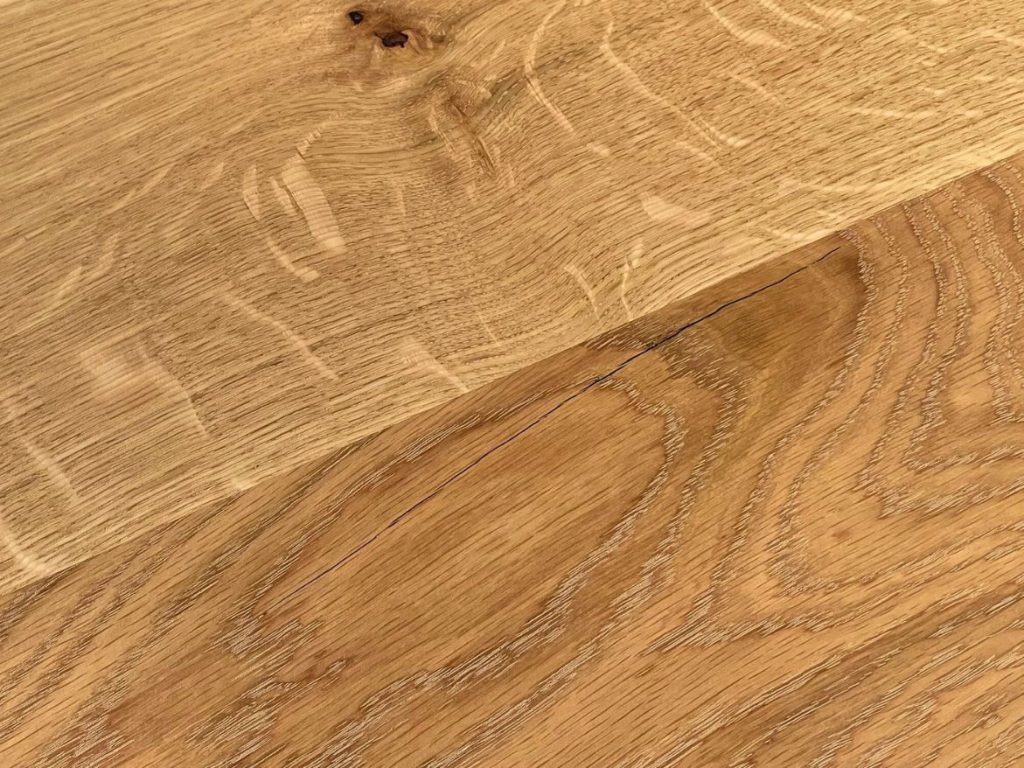
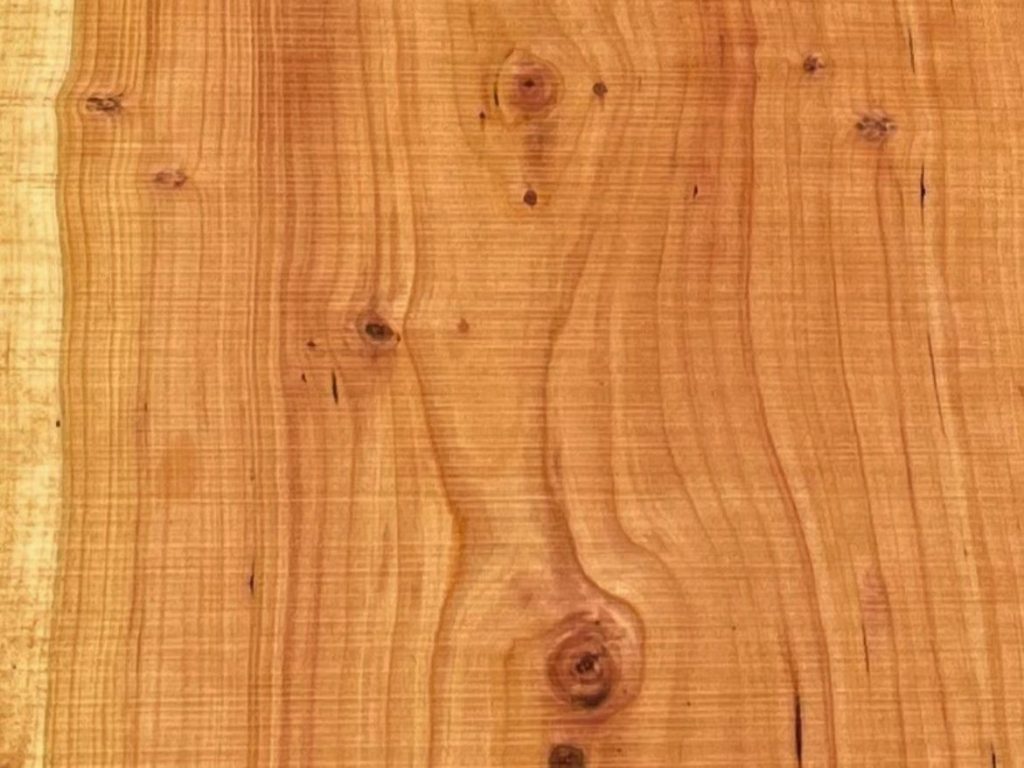
Cherry wood is cherished for its smooth grain and warm, reddish hue that gracefully ages to a richer, deeper patina.
It’s a moderately hard wood, offering good durability without being overly challenging to work with.
Cherry’s natural luster and fine texture make it a top choice for classic and contemporary furniture, providing a luxurious feel to tables and an unparalleled natural beauty.
Maple is a hardwood with a closed grain structure, giving it a uniformly smooth and fine texture. Coupled with its hardness, maple is highly resistant to wear and tear. It typically features a light, creamy color, often with subtle, wavy grain patterns referred to as “curl.”
Ambrosia maple is not a species of maple, rather it is a beautiful “defect” commonly found in maple. These grayish-blue streaks are formed when ambrosia beetles bore into dead or distressed maple trees, carrying a fungus on their body that reacts with the tree, resulting in the discolored streaks. Kiln-drying sterilizes the wood, making it suitable for woodworking.
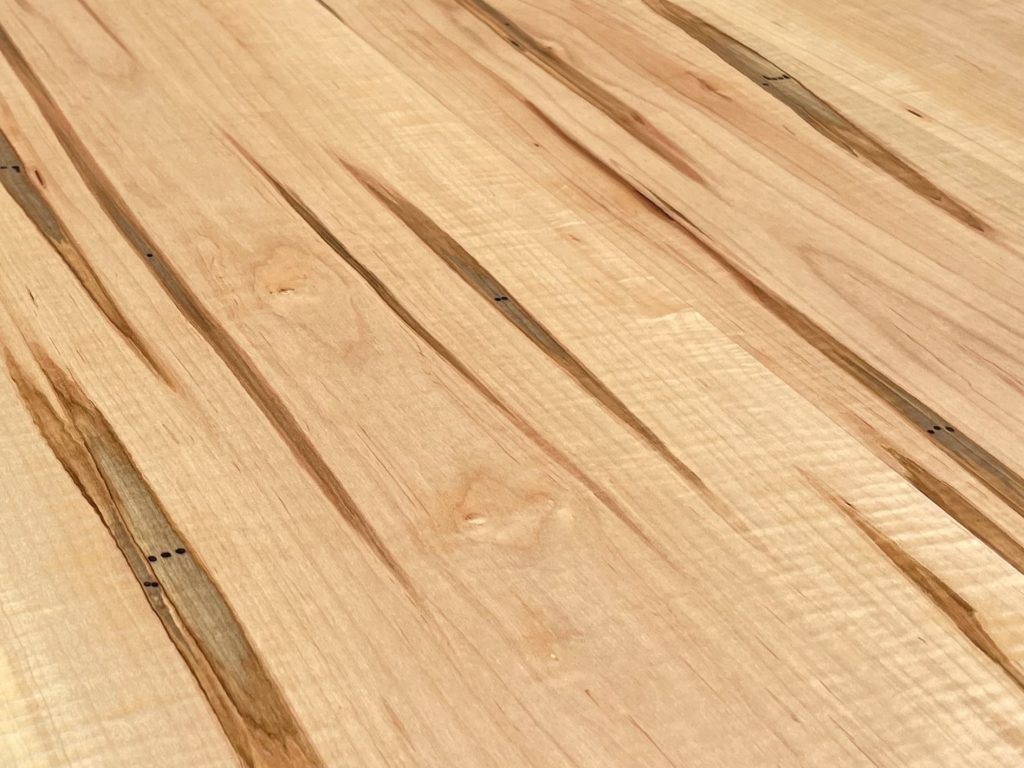
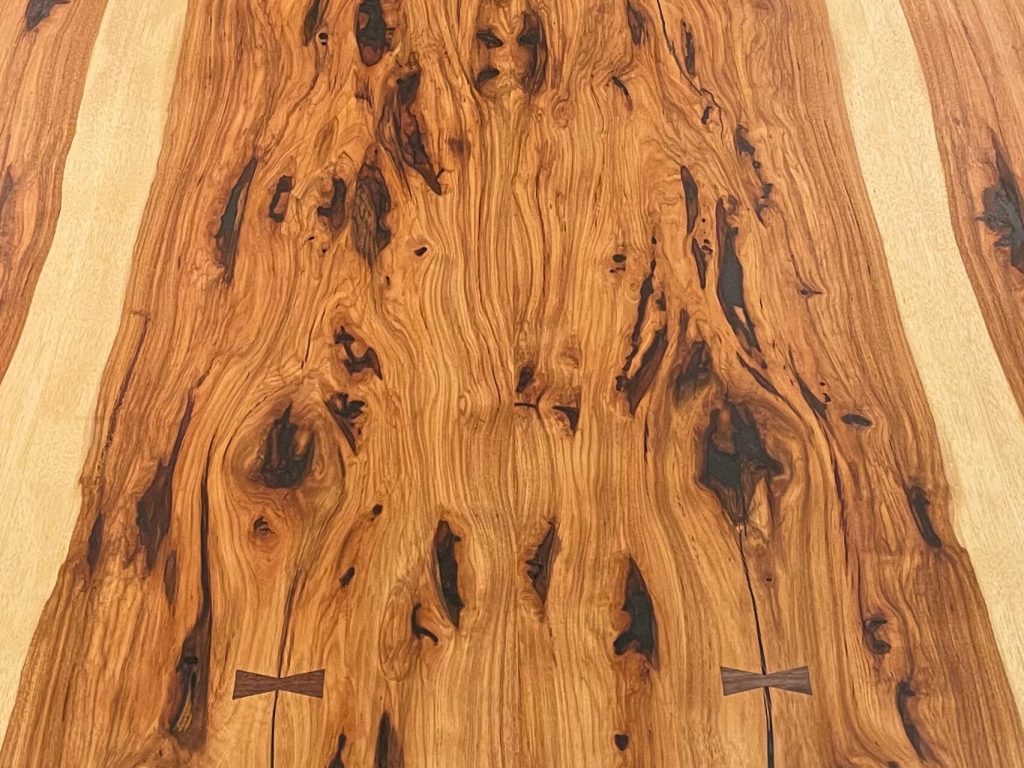
Hickory is one of the toughest American hardwoods, known for its strength, hardness, and frequent character.
Hickory lumber is commonly found with an abundance of knots and pockets of over-grown bark. These defects can be filled with resin, creating a perfectly smooth and durable surface while still retaining the rustic look. Hickory is also available in clearer grades with clean, uninterrupted wood grain.
Hickory’s resilience makes it perfect for tables that will see heavy use, and its bold character can make any piece a focal point in a room.
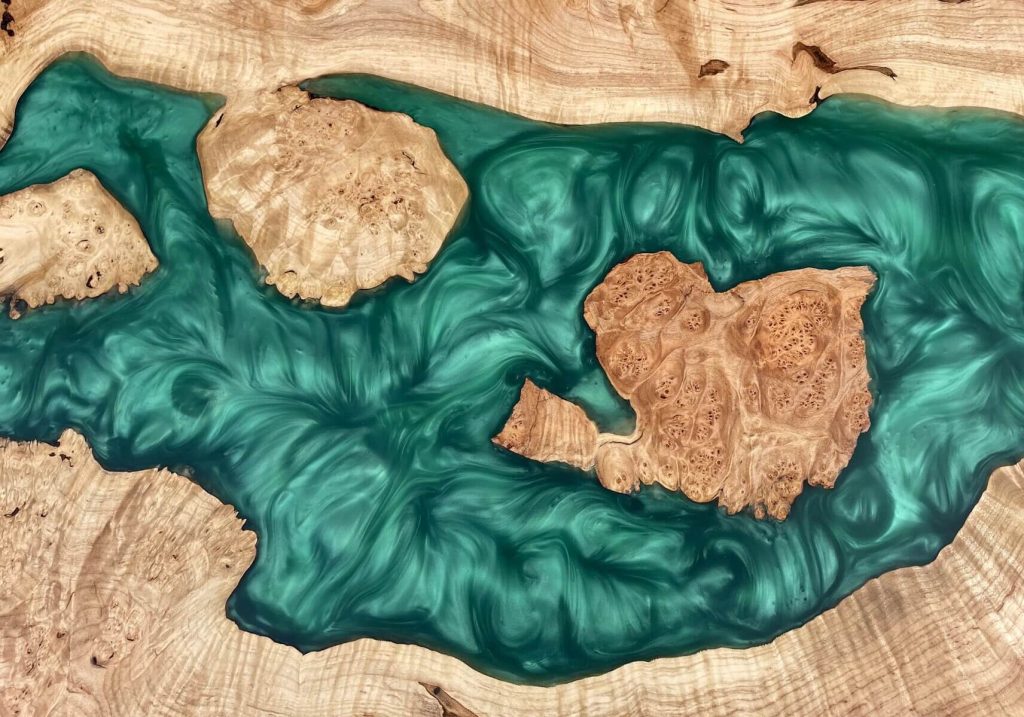

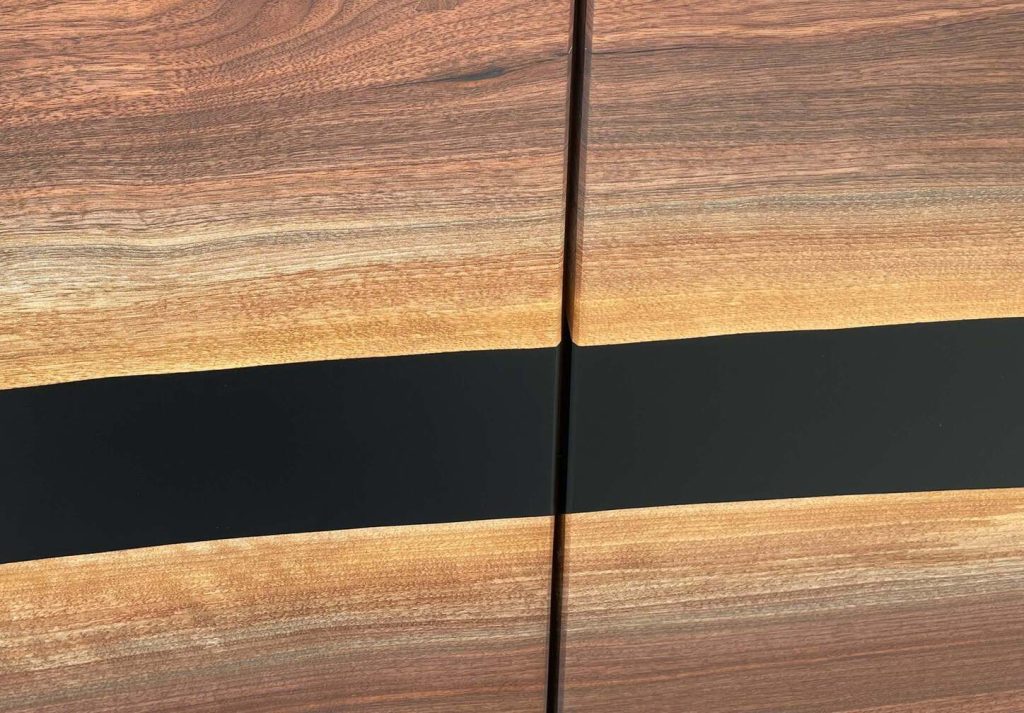
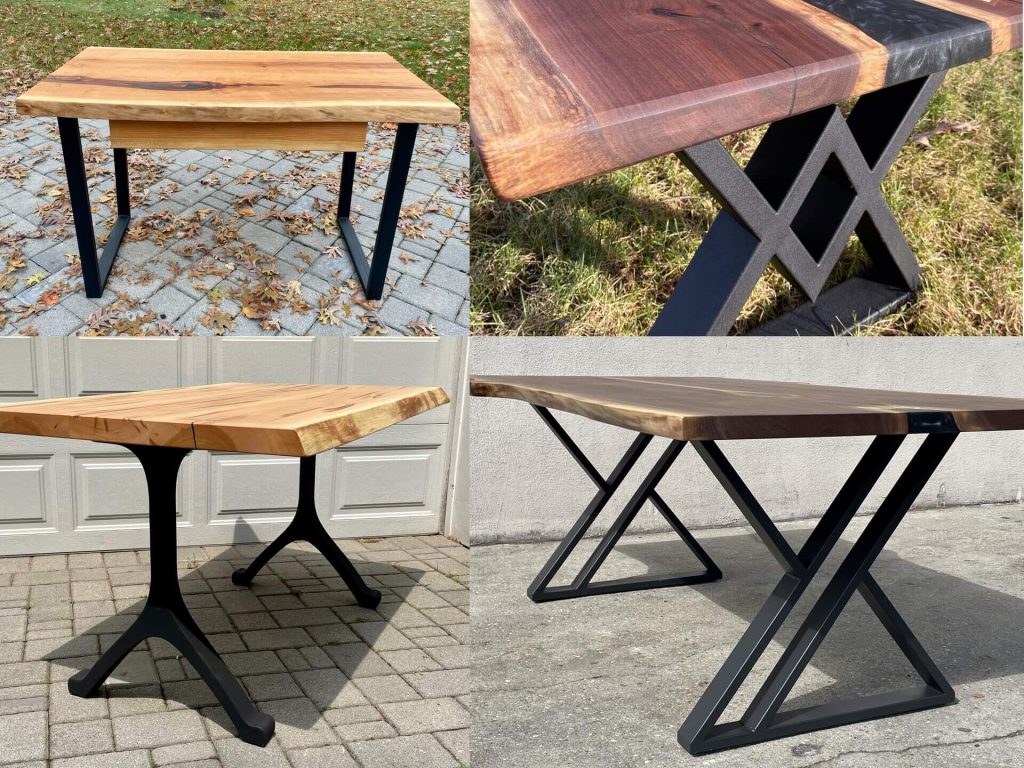
Metal Legs I typically work with steel legs with a matte black powder-coated finish. They’re strong, sturdy, and provide a nice contrast to the natural wood. There are many different designs available for all sized tables, desks, and benches. Other options, such as cast-iron and custom designs, are available on an order-by-order basis.

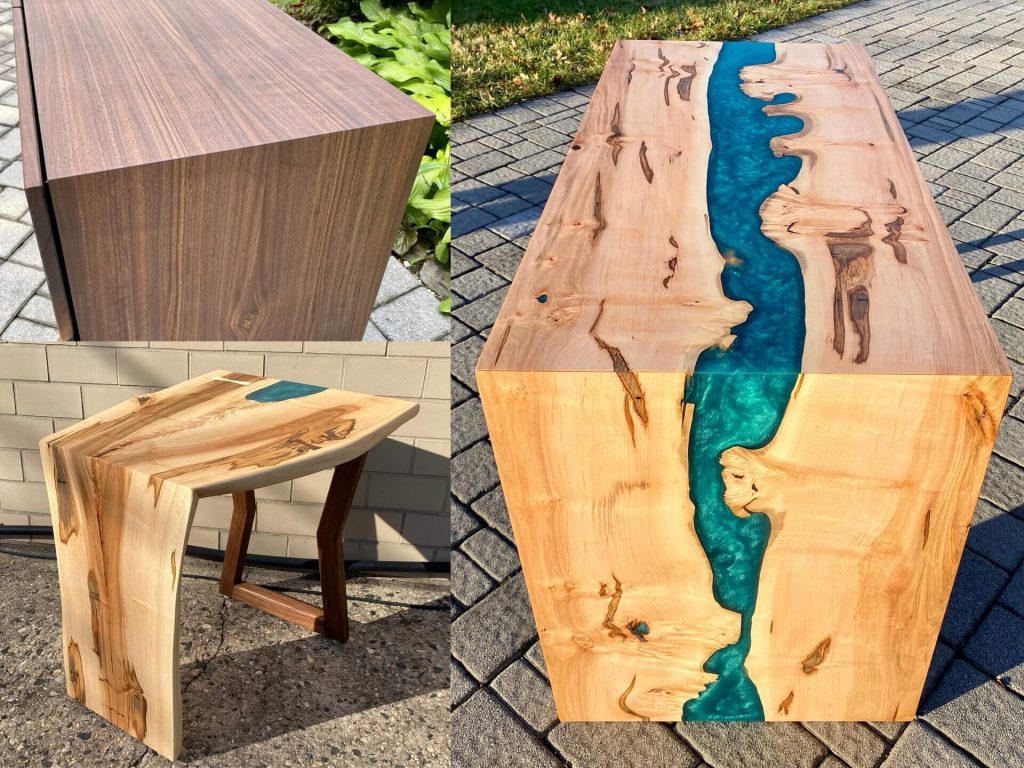
A Bookmatch is a design feature where two successive cuts of wood are opened like a book. This results in an incredibly unique and interesting mirror image of the grain pattern across the table. Bookmatches are perfect for creating jaw-dropping centerpieces such as a dining room table. Traditionally, bookmatched slabs are seamlessly glued together to make a tabletop, but these slabs can also be bookmatched in a resin river table.
